VPS39-deficiency observed in type 2 diabetes impairs muscle stem cell differentiation via altered autophagy and epigenetics
- PMID: 33893273
- PMCID: PMC8065135
- DOI: 10.1038/s41467-021-22068-5
VPS39-deficiency observed in type 2 diabetes impairs muscle stem cell differentiation via altered autophagy and epigenetics
Abstract
Insulin resistance and lower muscle quality (strength divided by mass) are hallmarks of type 2 diabetes (T2D). Here, we explore whether alterations in muscle stem cells (myoblasts) from individuals with T2D contribute to these phenotypes. We identify VPS39 as an important regulator of myoblast differentiation and muscle glucose uptake, and VPS39 is downregulated in myoblasts and myotubes from individuals with T2D. We discover a pathway connecting VPS39-deficiency in human myoblasts to impaired autophagy, abnormal epigenetic reprogramming, dysregulation of myogenic regulators, and perturbed differentiation. VPS39 knockdown in human myoblasts has profound effects on autophagic flux, insulin signaling, epigenetic enzymes, DNA methylation and expression of myogenic regulators, and gene sets related to the cell cycle, muscle structure and apoptosis. These data mimic what is observed in myoblasts from individuals with T2D. Furthermore, the muscle of Vps39+/- mice display reduced glucose uptake and altered expression of genes regulating autophagy, epigenetic programming, and myogenesis. Overall, VPS39-deficiency contributes to impaired muscle differentiation and reduced glucose uptake. VPS39 thereby offers a therapeutic target for T2D.
Conflict of interest statement
The authors declare no competing interests.
Figures
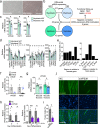
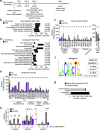
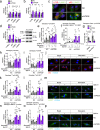
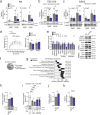
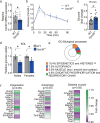

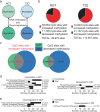
Comment in
-
Muscle VPS39 deficiency in people with T2DM.Nat Rev Endocrinol. 2021 Jul;17(7):383. doi: 10.1038/s41574-021-00508-y. Nat Rev Endocrinol. 2021. PMID: 33976394 No abstract available.
Similar articles
-
Dysregulated autophagy in muscle precursor cells from humans with type 2 diabetes.Sci Rep. 2019 Jun 3;9(1):8169. doi: 10.1038/s41598-019-44535-2. Sci Rep. 2019. PMID: 31160616 Free PMC article.
-
Abnormal epigenetic changes during differentiation of human skeletal muscle stem cells from obese subjects.BMC Med. 2017 Feb 22;15(1):39. doi: 10.1186/s12916-017-0792-x. BMC Med. 2017. PMID: 28222718 Free PMC article.
-
Mitophagy regulates mitochondrial network signaling, oxidative stress, and apoptosis during myoblast differentiation.Autophagy. 2019 Sep;15(9):1606-1619. doi: 10.1080/15548627.2019.1591672. Epub 2019 Apr 7. Autophagy. 2019. PMID: 30859901 Free PMC article.
-
Type 2 diabetes-induced overactivation of P300 contributes to skeletal muscle atrophy by inhibiting autophagic flux.Life Sci. 2020 Oct 1;258:118243. doi: 10.1016/j.lfs.2020.118243. Epub 2020 Aug 10. Life Sci. 2020. PMID: 32791154
-
Free Fatty Acid Impairs Myogenic Differentiation through the AMPKα-MicroRNA 206 Pathway.Mol Cell Biol. 2022 Jan 20;42(1):e0032721. doi: 10.1128/MCB.00327-21. Epub 2021 Oct 25. Mol Cell Biol. 2022. PMID: 34694913 Free PMC article.
Cited by
-
Epigenetics of type 2 diabetes mellitus and weight change - a tool for precision medicine?Nat Rev Endocrinol. 2022 Jul;18(7):433-448. doi: 10.1038/s41574-022-00671-w. Epub 2022 May 5. Nat Rev Endocrinol. 2022. PMID: 35513492 Review.
-
Activation of PDGF Signaling in the Adult Muscle Stem Cell Niche in Patients With Type 2 Diabetes Mellitus.J Clin Endocrinol Metab. 2023 Jul 14;108(8):2052-2064. doi: 10.1210/clinem/dgad041. J Clin Endocrinol Metab. 2023. PMID: 36702759 Free PMC article.
-
Circulating triglycerides are associated with human adipose tissue DNA methylation of genes linked to metabolic disease.Hum Mol Genet. 2023 May 18;32(11):1875-1887. doi: 10.1093/hmg/ddad024. Hum Mol Genet. 2023. PMID: 36752523 Free PMC article.
-
Multiomics profiling of DNA methylation, microRNA, and mRNA in skeletal muscle from monozygotic twin pairs discordant for type 2 diabetes identifies dysregulated genes controlling metabolism.BMC Med. 2024 Dec 2;22(1):572. doi: 10.1186/s12916-024-03789-y. BMC Med. 2024. PMID: 39623445 Free PMC article.
-
Genome-wide association studies and multi-omics integrative analysis reveal novel loci and their molecular mechanisms for circulating polyunsaturated, monounsaturated, and saturated fatty acids.medRxiv [Preprint]. 2024 Nov 24:2024.11.11.24317110. doi: 10.1101/2024.11.11.24317110. medRxiv. 2024. Update in: HGG Adv. 2025 Jun 21;6(4):100470. doi: 10.1016/j.xhgg.2025.100470. PMID: 39606376 Free PMC article. Updated. Preprint.
References
Publication types
MeSH terms
Substances
LinkOut - more resources
Full Text Sources
Other Literature Sources
Medical
Molecular Biology Databases

